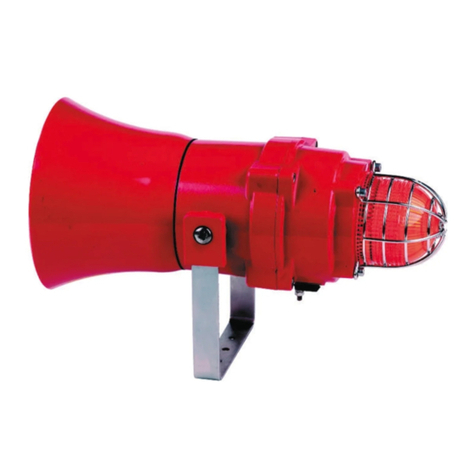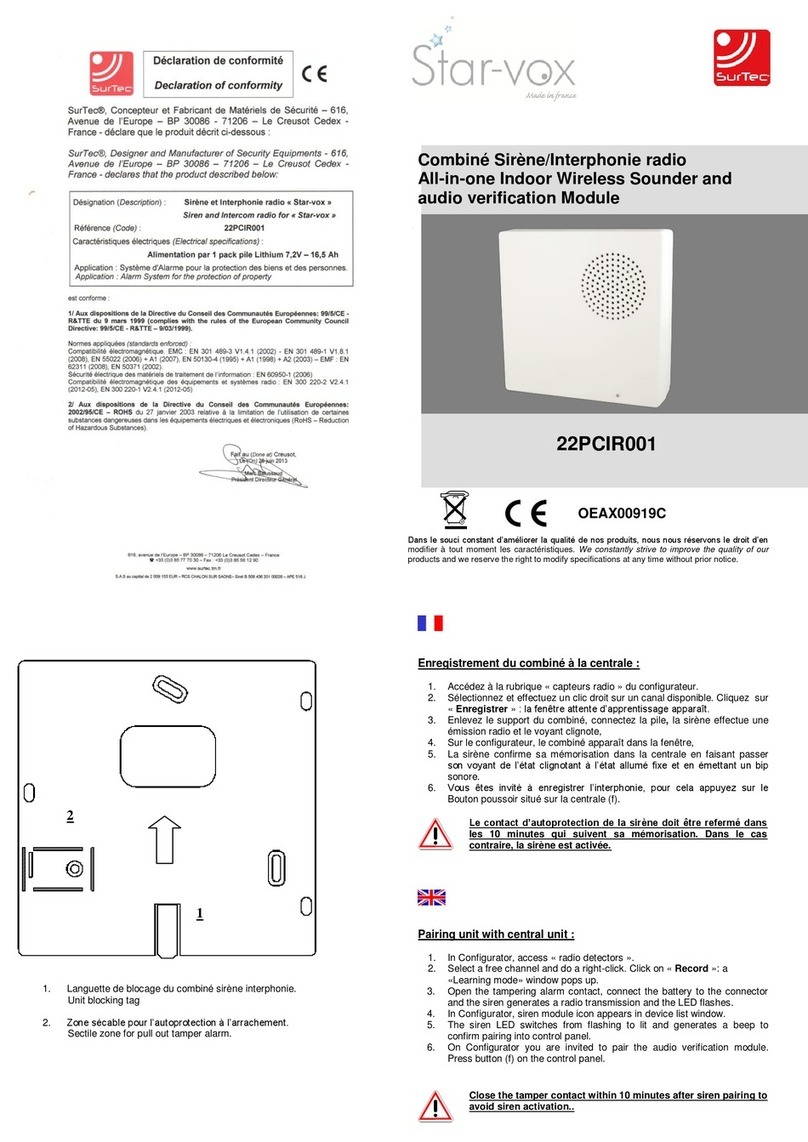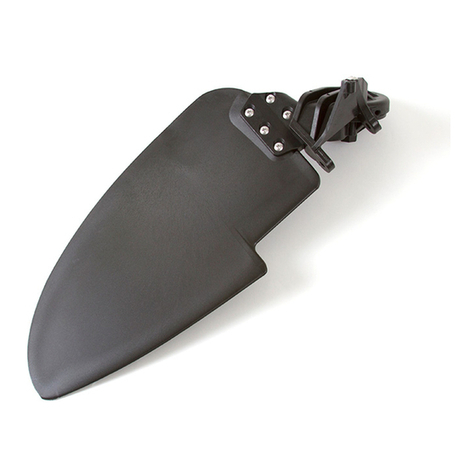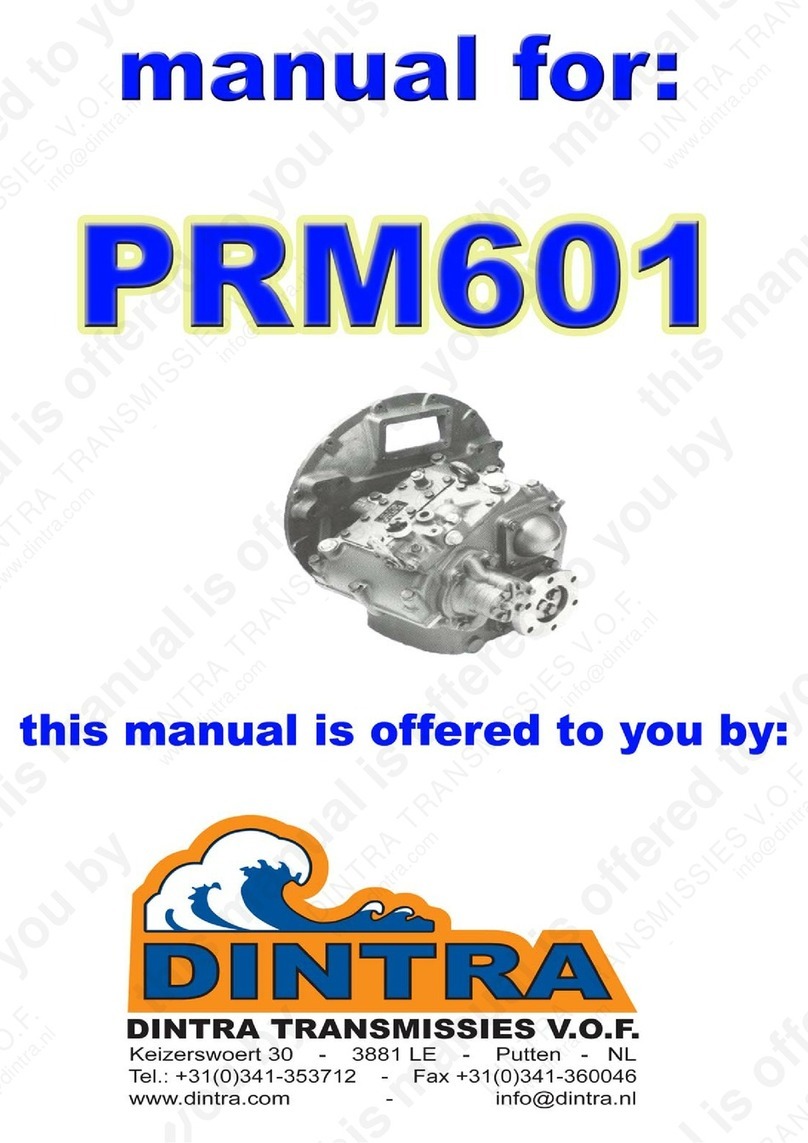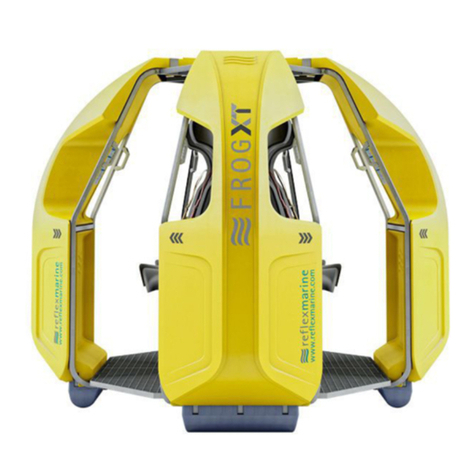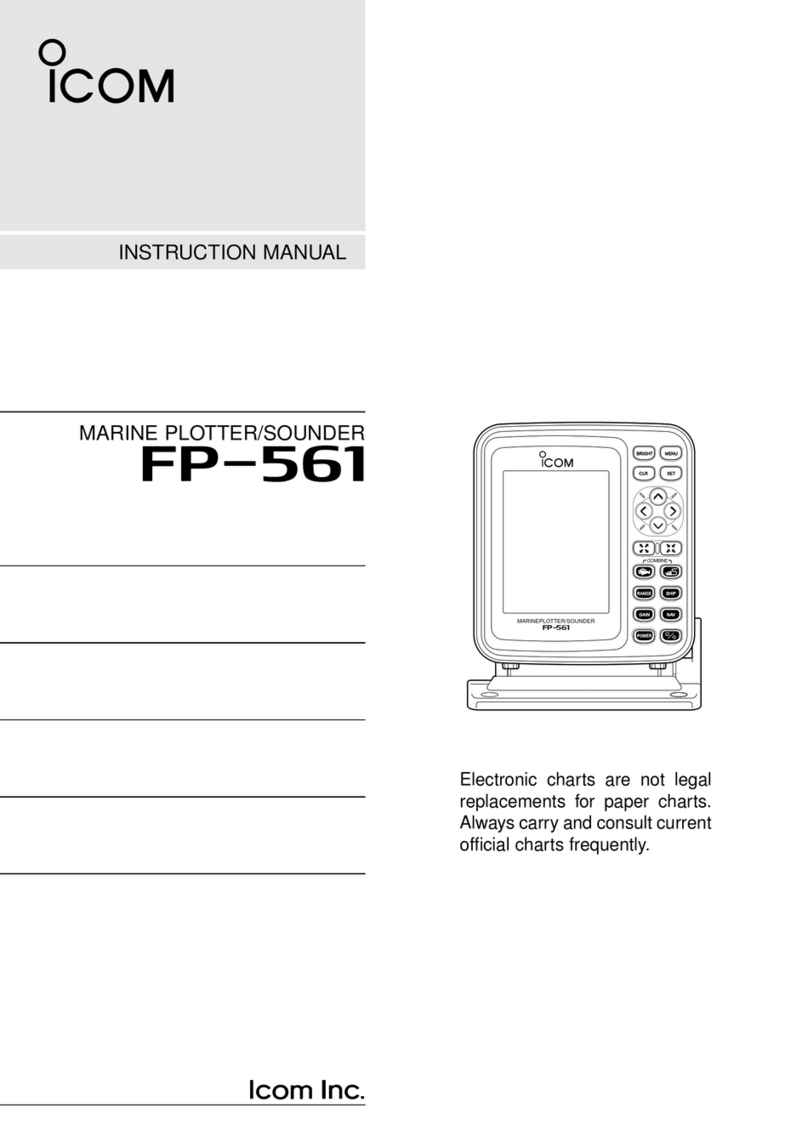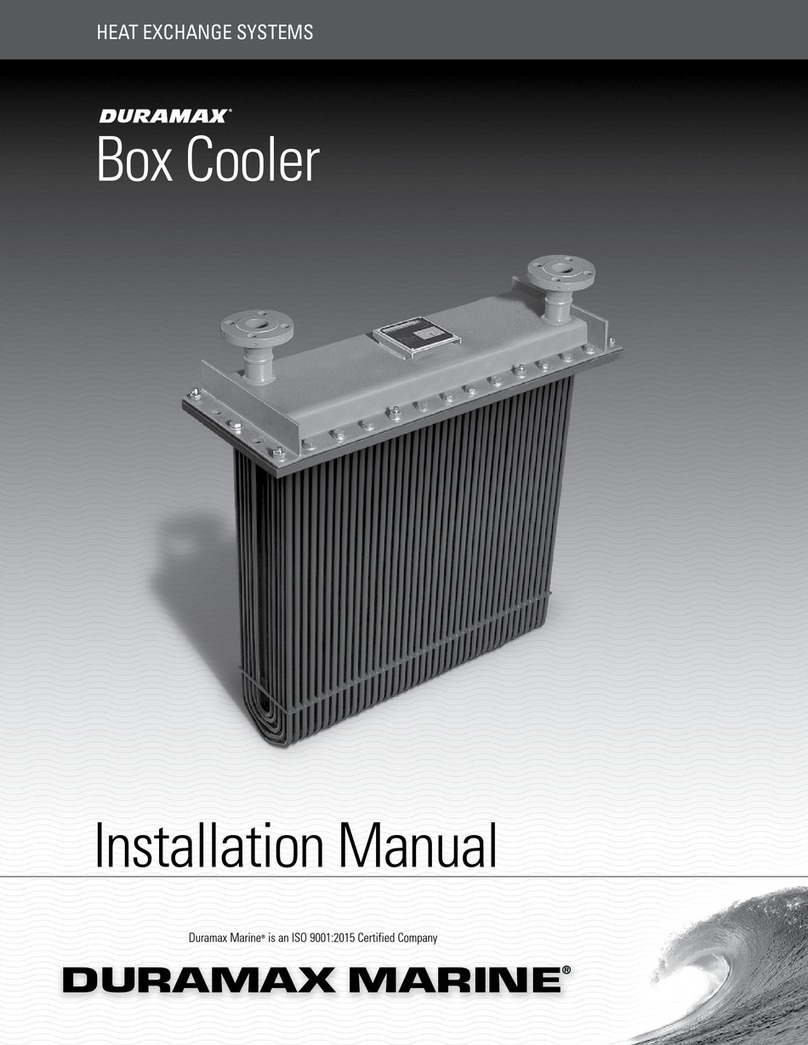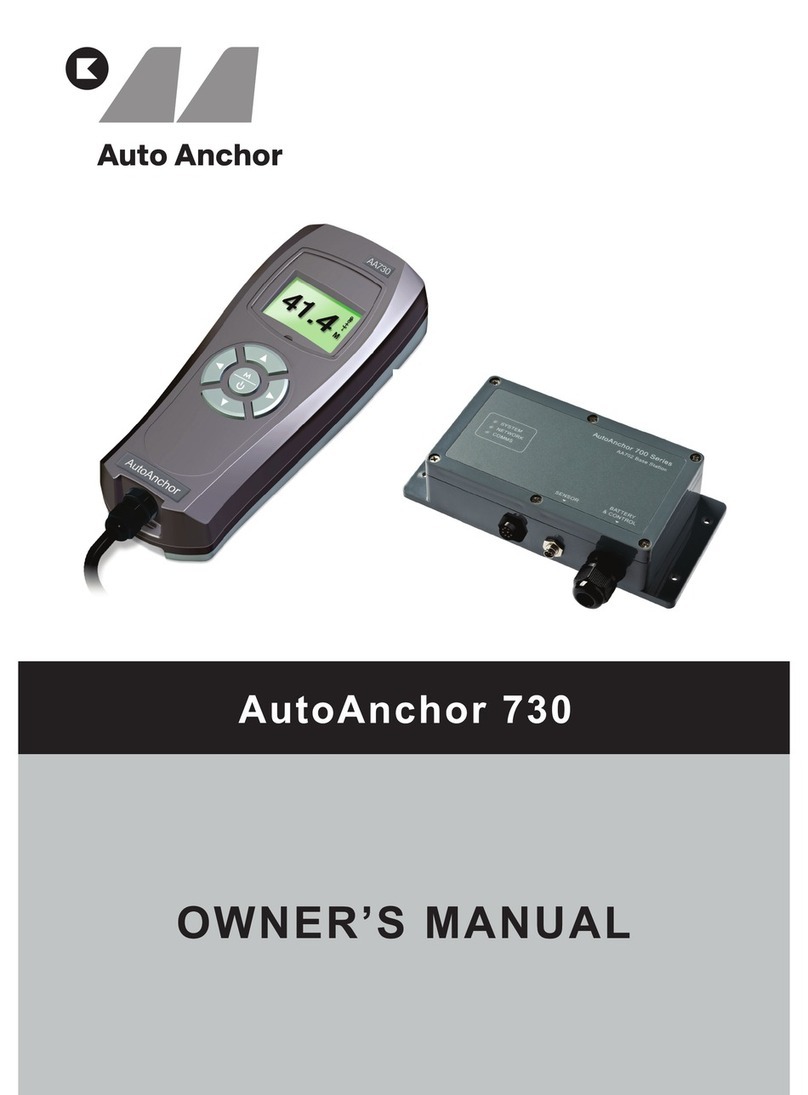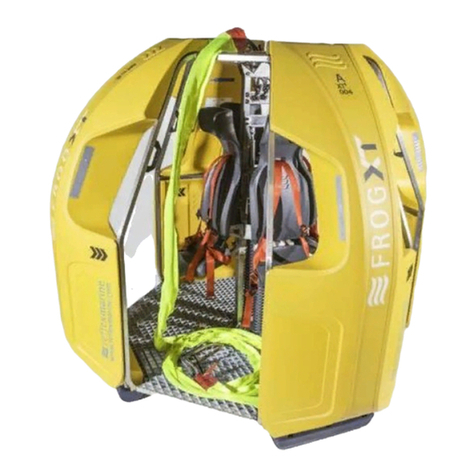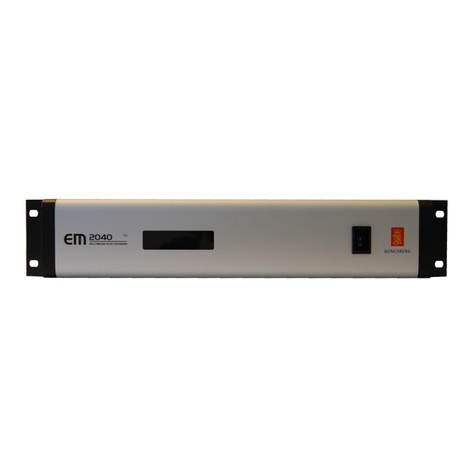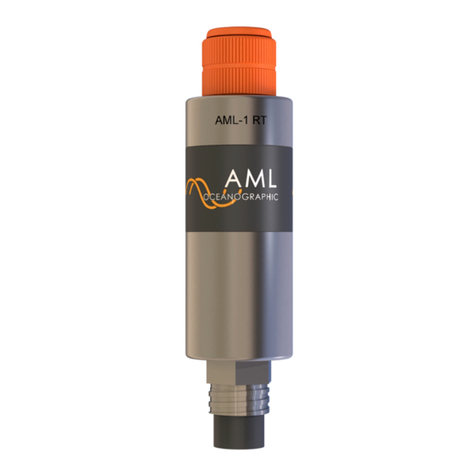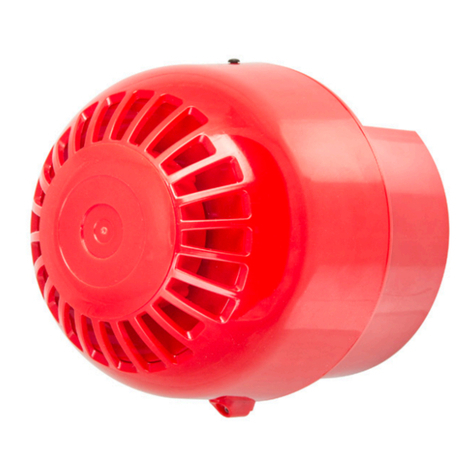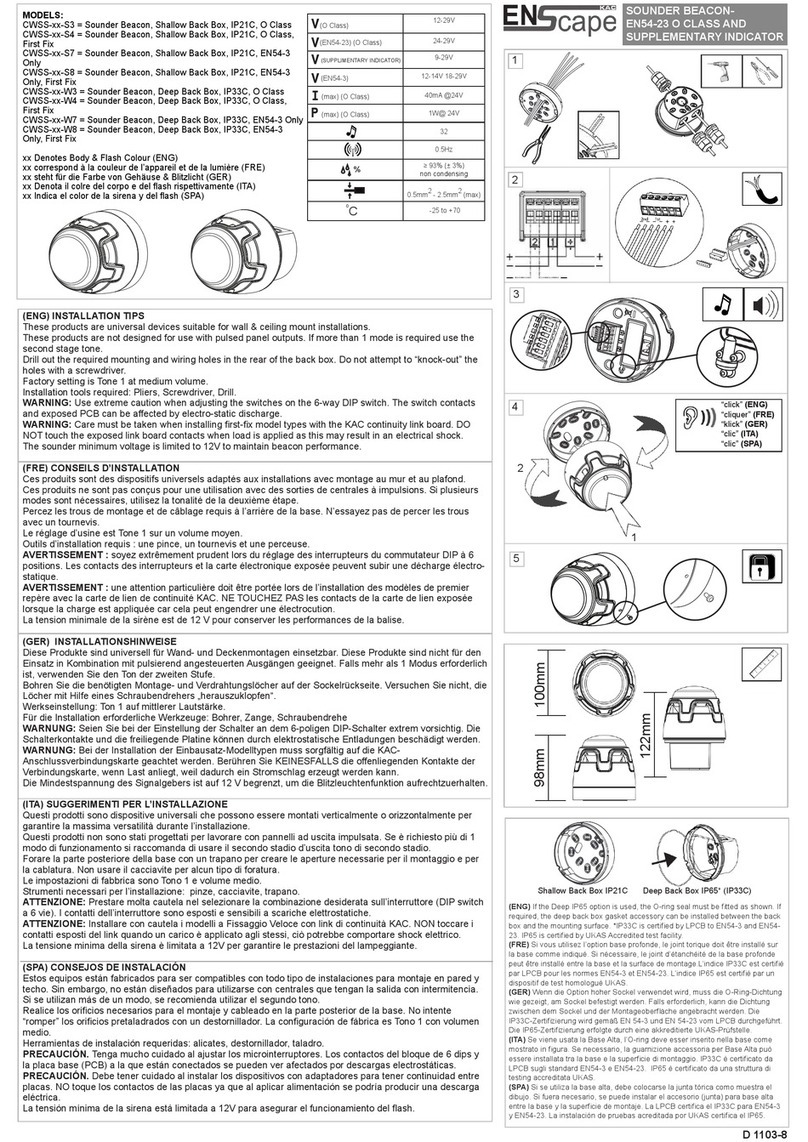Intellian FB250 User manual

FB250/Fleet One
Inmarsat FleetBroadband/Fleet One
Installation & Operation User Guide

Doc. No. UG-KF2001-V1.2
Serial number of the product
This serial number will be required for all troubleshooting or service inquiries.
Disclaimer
The information in this user manual is subject to change without prior notice through a
product life cycle. A printed version of the user manual is periodically updated and may
contain inaccuracies or omissions compared to the recent product information. The most
up-to-date information is available on our website at intelliantech.com.
© 2020 Intellian Technologies, Inc. All rights reserved. Intellian and the Intellian
logo are trademarks of Intellian Technologies, Inc., registered in the U.S. and other
countries. Intellian may have patents, patent applications, trademarks, copyrights, or
other intellectual property rights covering subject matter in this document. Except as
expressly provided in any written license agreement from Intellian, the furnishing of this
document does not give you any license to these patents, trademarks, copyrights, or
other intellectual property. All other logos, trademarks, and registered trademarks are the
property of their respective owners. Information in this document is subject to change
without notice. Every effort has been made to ensure that the information in this manual
is accurate. Intellian is not responsible for printing or clerical errors.

Table of Contents
3
Table of Contents
Chapter 1. Precautions 8
1.1 Warnings, Cautions, and Notes 8
1.2 General Precautions 8
Chapter 2. Certifications 10
Chapter 3. Introduction 11
3.1 Introduction of FB250/Fleet One 11
3.2 Features of FB250/Fleet One 11
3.3 Overview of FleetBroadband 12
3.3.1 BGAN Services 12
Chapter 4. Planning Installation 14
4.1 Selecting Installation Site 14
4.1.1 Avoiding RF Interference 14
4.1.2 RF Hazard Precautions 15
4.2 System Package 16
4.2.1 Above Deck Unit (ADU) / Antenna Unit 16
4.2.2 Below Deck Unit (BDU) 16
4.2.3 Packing List 17
4.3 System Cables 19
4.3.1 Antenna RF Cable (Connecting ADU - BDU) 19
4.4 Unpacking System Package 20
Chapter 5. Installing ADU 22
5.1 Antenna Dimensions 22
5.2 ADU Mounting Hole Pattern 23
5.3 Mast Designing (Installation Example) 24
5.4 Mounting Antenna 26
5.4.1 Mounting Antenna on Mast 26
5.4.2 Mounting Antenna on Pole (Optional) 26
5.5 Connecting Antenna RF Cable 28
Chapter 6. Installing BDU 29
6.1 Selecting BDU Installation Site 29
6.2 BDU Dimensions 29
6.3 BDU Mounting Template 31
6.4 Mounting BDU 32
6.4.1 Direct Mounting Type 32
6.4.2 19-inch Rack Mounting Type (Optional) 32
6.5 Antenna System Configuration 34
6.5.1 Data sessions and voice calls 34
6.6 BDU Cable Connection 35
6.6.1 BDU Back Panel View 35
6.6.2 BDU Connector Pinout Guide 35

FB250/Fleet One - Marine Satellite Communication System
4
6.6.3 Connecting DC Power to BDU 39
6.6.4 Connecting BDU to ADU (Antenna) 42
6.6.5 Connecting BDU to Devices using LAN Port (RJ45) 42
6.6.6 Connecting BDU to Device using WAN Port 43
6.6.7 Connecting BDU to POTS Phone (RJ14) 43
6.6.8 Connecting BDU to External Devices 44
6.6.9 Connecting Wi-Fi Antenna to BDU 44
6.6.10 Grounding Stud 44
6.6.11 Inserting USIM Card 45
Chapter 7. Operating BDU 46
7.1 BDU Front Panel 46
7.2 Powering On System 47
7.3 Making POTS Phone Call 47
7.4 Enabling PoE 48
7.5 Activating Data Connection 49
7.5.1 Registering Device 49
7.5.2 Activating Data Connection 50
7.6 Using Grandstream VoIP Phone Call 51
7.7 Using Wireless Devices through Wi-Fi 54
7.8 Using Mobile Phone Call 55
7.8.1 Installing Mobile Application 55
7.8.2 Registering New Extension for Voice Service (Optional) 55
7.8.3 Setting Mobile Phone 56
Chapter 8. Using AptusLX 57
8.1 Introduction 57
8.2 Accessing Internal Webpage of BDU 57
8.3 Login 58
8.4 Top Menus 59
8.5 Account Menu 60
8.5.1 User 60
8.5.2 Logout 61
8.6 Dashboard 62
8.6.1 Satellite Data Connection Control 63
8.6.2 Satellite Connection Statistics 64
8.7 Status 65
8.7.1 Network 65
8.7.2 Wi-Fi 66
8.7.3 Phone/PABX 67
8.7.4 Data 68
8.7.5 USIM 69
8.7.6 Terminal info 70
8.7.7 External GPIO 70
8.8 Setup 71
8.8.1 Network 71
8.8.2 Wi-Fi 72
8.8.3 Firewall 73

Table of Contents
5
8.8.4 Phone/PABX 76
8.8.5 Data 77
8.8.6 Satellite 78
8.8.7 SMS 79
8.8.8 Service Profile 81
8.8.9 Service User Group 83
8.8.10 Device Registration 84
8.8.11 Traffic Flow Template (TFT) 85
8.8.12 USIM 86
8.8.13 External GPIO 87
8.8.14 Restricted Dialing 88
8.8.15 Multi Voice 89
8.8.16 NSD 90
8.8.17 MST 91
8.9 Tools 92
8.9.1 Software Upgrade 92
8.9.2 Backup and Restore 94
8.9.3 Reset 95
8.9.4 Logs 96
8.9.5 Diagnostic 97
8.9.6 Support 98
Chapter 9. Specification 99
9.1 Technical Specification 99
9.2 Environmental Specification 100
Chapter 10. Warranty Policy 101
Chapter 11. Appendix 102
11.1 Appendix A. Tightening Torque Specification 102

FB250/Fleet One - Marine Satellite Communication System
6
List of Figures
Chapter 4. Planning Installation 14
Figure 1: Potential RF Interference 14
Figure 2: RF Hazard Precautions 15
Figure 3: Above Deck Unit (ADU) / Antenna Unit 16
Figure 4: Below Deck Unit (BDU) 16
Figure 5: Unpacking System Package (with ADU & BDU Sub-package) 20
Figure 6: Unpacking BDU Package 20
Figure 7: Unpacking ADU Package 21
Chapter 5. Installing ADU 22
Figure 8: Antenna Dimensions 22
Figure 9: ADU Mounting Hole Pattern 23
Figure 10: Recommended Mast Design 25
Figure 11: Mounting Antenna on Mast 26
Figure 12: Installing 40 A Pole Bushing inside Pole Tube 27
Figure 13: Installing Pole Bracket 27
Figure 14: Mounting Antenna on Pole Mounted Bracket 27
Figure 15: Connecting Antenna RF Cable 28
Chapter 6. Installing BDU 29
Figure 16: BDU Dimensions (Direct Mounting Type) 29
Figure 17: BDU Dimensions (19-inch Rack Mounting Type_Optional) 30
Figure 18: BDU Mounting Template 31
Figure 19: Direct Mounting of BDU 32
Figure 20: Attach Cable Tray to BDU 32
Figure 21: Attach Rackmount Plate to BDU 33
Figure 22: Mount BDU Assembly into 19” Rack 33
Figure 23: System with Connected Devices for FB250 and not Fleet One 34
Figure 24: BDU Back Panel View 35
Figure 25: DC Power Connector Pinout 35
Figure 26: Antenna Connector (TNC) Pinout 36
Figure 27: LAN Connector (RJ45) Pinout 36
Figure 28: POTS Phone Connector (RJ14 & 6P4C) Pinout 36
Figure 29: GPIO Connector Pinout 37
Figure 30: DC Power to BDU Connection 39
Figure 31: BDU to Antenna Cable Connection 42
Figure 32: BDU to Devices Cable Connection using LAN Port (RJ45) 42
Figure 33: BDU to Device Cable Connection using WAN Port 43
Figure 34: BDU to POTS Phone (RJ14) Cable Connection 43
Figure 35: Using Cable Splitter with POTS Phones (RJ14) 43
Figure 36: BDU to External Devices Connection 44
Figure 37: Wi-Fi Antenna to BDU Connection 44
Figure 38: Grounding Stud Connection 44

Table of Contents
7
Chapter 7. Operating BDU 46
Figure 39: BDU Front Panel 46

FB250/Fleet One - Marine Satellite Communication System
8
Chapter 1. Precautions
1.1 Warnings, Cautions, and Notes
WARNING, CAUTION, and NOTE statements are used throughout this manual to emphasize important and
critical information. You must read these statements to help ensure safety and to prevent product damage.
The statements are defined below.
WARNING
WARNING
WARNING indicates a potentially hazardous situation which, if not avoided, could result
in death or serious injury.
CAUTION
CAUTION
CAUTION indicates a potentially hazardous situation which, if not avoided, could
result in minor or moderate injury or damage to equipment. It may also be used to alert
against unsafe practices.
NOTE
NOTE
A NOTE statement is used to notify people of installation, operation, programming, or
maintenance information that is important, but not hazard-related.
1.2 General Precautions
Before you use the antenna, make sure that you have read and understood all safety requirements.
THIS WAY UP
•Place the boxes/crates on the floor with the arrow pointing up.
FRAGILE
•Since the Radome is fragile, handle it with care. Do not apply excessive pressure or
shock. These may cause surface cracking or other damage.
DO NOT STACK MORE THAN FOUR UNITS
•Do not stack boxes/crates more than four units as there is a risk boxes/crates may fall
and be damaged.
KEEP DRY
•Always make sure the antenna is stored on a dry surface in a dry, well-ventilated area.
•The antenna is designed to withstand a normal rain shower; however, water resistance
cannot be guaranteed if the antenna is submerged.

Precautions
9
*DO NOT SHIP VIA RAIL: Ensure not to ship any system via Rail.
*Shock Hazard: To minimize shock hazard and to protect against lightning, you must connect the
equipment chassis and cabinet to an electrical ground. Make sure the system is correctly grounded and
power is off when installing, configuring, and connecting components.
*Do not operate in an explosive atmosphere: Do not operate the equipment in explosive environments
or in the presence of flammable gases. Operating this equipment in such an environment causes a
definite safety hazard.
*Keep away from living circuits: Operating personnel must at all times observe all safety regulations.
Do not replace components or make adjustment inside the equipment with any power supply turned on.
Under certain conditions, dangerous potentials may exist in the power supplies even with the power cable
removed. To avoid injuries, always remove the power and discharge a circuit before touching it.

FB250/Fleet One - Marine Satellite Communication System
10
Chapter 2. Certifications
This device complies with part 15 of the FCC Rules and with Industry Canada licence-exempt RSS
standard(s).
Operation is subject to the following two conditions:
(1) This device may not cause harmful interference, and
(2) this device must accept any interference received, including interference that may cause undesired
operation.
L’émetteur/récepteur exempt de licence contenu dans le présent appareil est conforme aux CNR
d’Innovation, Sciences et Développement économique Canada applicables aux appareils radio exempts de
licence. L’exploitation est autorisée aux deux conditions suivantes :
(1) L’appareil ne doit pas produire de brouillage;
(2) L’appareil doit accepter tout brouillage radioélectrique subi, même si le brouillage est susceptible d’en
compromettre le fonctionnement.
Changes or modifications made to this equipment not expressly approved by Intellian Technologies, Inc.
may void the FCC authorization to operate this equipment.
Radiofrequency radiation exposure Information:
This equipment complies with RED and FCC, IC radiation exposure limits set forth for an uncontrolled
environment. This equipment should be installed and operated with minimum distance of 2.3 m between
the radiator and your body.
This transmitter must not be co-located or operating in conjunction with any other antenna or transmitter.
Note: This equipment has been tested and found to comply with the limits for a Class B digital device,
pursuant to part 15 of the FCC Rules. These limits are designed to provide reasonable protection against
harmful interference in a residential installation. This equipment generates, uses and can radiate radio
frequency energy and, if not installed and used in accordance with the instructions, may cause harmful
interference to radio communications. However, there is no guarantee that interference will not occur in
a particular installation. If this equipment does cause harmful interference to radio or television reception,
which can be determined by turning the equipment off and on, the user is encouraged to try to correct the
interference by one or more of the following measures:
-Reorient or relocate the receiving antenna.
-Increase the separation between the equipment and receiver.
-Connect the equipment into an outlet on a circuit different from that to which the receiver is connected.
-Consult the dealer or an experienced radio/TV technician for help.

Introduction
11
Chapter 3. Introduction
3.1 Introduction of FB250/Fleet One
Intellian’s FB250 and Fleet One deliver cost-effective voice and data globally via the world’s most
reliable commercial L-band satellite, Inmarsat-4s. They introduce the most competitive, highly efficient
RF performance, and easy to install solutions that aim to satisfy customers’ demand for a low cost of
ownership in terms of deployment, installation, and efficient operation.
Intellian Fleet One provides simultaneous voice and IP data up to 150 kbps. Intellian FB250 provides up to
284 kbps IP data and 128 kbps streaming IP with VoIP service and SMS, and it is compatible with the GSM
network standard.
3.2 Features of FB250/Fleet One
Inmarsat Fleet Broadband/Fleet One Service
Intellian FB250/Fleet One provides simultaneous high-speed data and voice communication via satellite
through the BGAN (Broadband Global Area Network).
Compatible with GMDSS
Intellian FB250/Fleet One is reliable and compatible with the new Fleet Safety GMDSS system.
Enhanced Security
Intellian FB250/Fleet One monitors incoming and outgoing network traffic and to allow or block specific
traffic based on a defined set of security rules.
Reliable Data Connectivity
The embedded LAN ports allow various IP device connections for simple use such as SIP phones. The
dedicated PoE ports 1 and 2 allow IP device connections with PoE features.
For Intellian FB250, a dedicated WAN port provides a solution for an alternative data connection.
Simple and Easy
Intellian FB250/Fleet One is designed for simple and easy installation. The ultra-lightweight antenna enables
Carry onboard installation and is connected to the below deck unit by a single RF cable.
Secured Safety at Sea
Intellian FB250/Fleet One ensures reliable connectivity to access critical applications wherever you are. In
an emergency, Intellian Fleet One supports Inmarsat’s ‘505’ safety service. Also, Intellian FB250/Fleet One
supports Maritime Safety Terminal, Inmarsat’s next generation of GMDSS.
Unlimited Back-up to Fleet Xpress Service
For Intellian FB250, Fleet Xpress is a fully managed and streamlined broadband satellite communications
service that promises to be a winning solution for many of the higher volume segments of the maritime
market, such as commercial shipping. Reliability of Inmarsat’s FleetBroadband network will complete the
Fleet Xpress service with Intellian’s Global Xpress product line-ups, the GX100NX, and GX60NX.

FB250/Fleet One - Marine Satellite Communication System
12
3.3 Overview of FleetBroadband
3.3.1 BGAN Services
The Broadband Global Area Network (BGAN) is a global Satellite Internet Network using portable terminals.
The terminals are usually connected to a laptop computer to access broadband Internet in remote
locations, where a line-of-sight to the satellite exists. The user can make phone calls, access the Internet,
check e-mail, download files, or perform any other Internet activity using the terminals. The network is
provided by Inmarsat and uses four geostationary satellites called I-4 and Alphasat to provide almost global
coverage. The map below shows the four satellite coverage regions.
FleetBroadband service coverage
Fleet One Global Coverage

Introduction
13
Fleet One Coastal Coverage and rate regions
NOTE
NOTE
The above map depicts Inmarsat’s expectations of coverage but does not represent a guarantee of service.
The availability of service at the edge of coverage areas fluctuates depending on various conditions.

FB250/Fleet One - Marine Satellite Communication System
14
Chapter 4. Planning Installation
The antenna installation requires precaution and safety measures. Failure to follow the correct installation
process may lead to injury of the installer and/or cause damage to the system. In order to maximize the
performance of the system, a thorough review of this installation guide is strongly recommended, as well as
executing the installation process as it is noted in this manual.
4.1 Selecting Installation Site
The antenna should be placed in an area on-board of the vessel with an unobstructed view extending
from (at least) -30° below the horizontal surface in all azimuth direction. When the antenna is transmitting,
obstacles in way of the beam path will cause decreased satellite signal strength. The antenna unit should
have direct line-of-sight with the desired satellite without any obstacles in the beam path. Certain minimum
distances between the antenna and other onboard devices must also be considered during installation.
Do not place the antenna near to a funnel because smoke deposits can cause corrosion of the antenna. In
addition, the deposit can result in any malfunction of the antenna.
Do not place the antenna where there is a direct spray of seawater to avoid percolating any water into the
vent hole.
4.1.1 Avoiding RF Interference
Do not install the antenna near the high power shortwave radar. Most radar transmitters emit RF energy
within an elevation range of -15° to +15°. For this reason, it is recommended to position the antenna at least
4.6 m (15.09 feet) away from any radars (s-band, c-band, and x-band radar up to 50kW).
WARNING
WARNING
Never place the antenna in the beam path of the radar regardless of distance. The high power shortwave
radar may impair its performance or damage the antenna.
Radar
+15°
-15°
Antenna
Antenna
Minimum
4.6 m (15.09 feet)
Figure 1: Potential RF Interference

Planning Installation
15
4.1.2 RF Hazard Precautions
The antenna is designed to be used with radiation transmitting equipment manufactured by others.
Exposure to RF radiation, including exposure associated with improper use of the transmitting equipment,
may be hazardous to people who work close to the Above Deck Unit. Ensure the safety of personnel who
work with in the system.
During transmission, ensure to keep the minimum safety distance. The recommended minimum safety
distance to the reflector on the focal line is as follows. It is based on a Radiation Exposure Level of W/
m² that applies under an uncontrolled environment. No hazard exists >20° below the antenna’s mounting
plane.
Radiation Exposure Level Recommended Minimum Safety Distance
10 W/m² more than 0.8 m
25 W/m² more than 0.5 m
100 W/m² more than 0.25 m
20° 20°
RF Radiation Hazard Area
Figure 2: RF Hazard Precautions

FB250/Fleet One - Marine Satellite Communication System
16
4.2 System Package
4.2.1 Above Deck Unit (ADU) / Antenna Unit
The Above Deck Unit (ADU) consists of a medium-size maritime 2-axis stabilized BGAN antenna, active RF
switch, BRM, and GNSS circuit.
The antenna unit is protected from a severe marine environment by a radome. The ADU and BDU are
connected by a single coaxial cable which delivers RF signals and DC power.
Figure 3: Above Deck Unit (ADU) / Antenna Unit
4.2.2 Below Deck Unit (BDU)
The Below Deck Unit (BDU) supports voice and data communications in a marine environment. The BDU
is the main control unit of an antenna system that monitors and controls the antenna operation through
Intellian’s web-based software. The BDU contains user interfaces and controls all communication between
the ADU and the local communication devices such as phones, and computers, etc.
Figure 4: Below Deck Unit (BDU)

Planning Installation
17
4.2.3 Packing List
Before beginning installation, make sure you have all the included components.
The ADU Package & BDU Package are provided in one box.
NOTE: The USIM card is provided by the service provider and may be packaged separately.
Above Deck Unit (ADU) Package for FB250
Item Q'ty Size Description
Above Deck Unit (ADU) 1 Antenna Unit
Antenna RF Cable
(LMR200, TNC/M-TNC/M Type) 1 25 m To Connect ADU - BDU
Antenna Mounting Template 1 Antenna Mounting Template
Hex Bolt 5 M6 x 30 L
To Mount Antenna on Mounting Surface (M6 Bolt
Kit)
Spring Washer 5 M6
Flat Washer 5 M6
Above Deck Unit (ADU) Package for Fleet One
Item Q'ty Size Description
Above Deck Unit (ADU) 1 Antenna Unit
Antenna RF Cable
(LMR200, TNC/M-TNC/M Type) 1 10 m To Connect ADU - BDU
Antenna Mounting Template 1 Antenna Mounting Template
Hex Bolt 5 M6 x 30 L
To Mount Antenna on Mounting Surface
(M6 Bolt Kit)
Spring Washer 5 M6
Flat Washer 5 M6
Below Deck Unit (BDU) Package
Item Q'ty Size Description
Below Deck Unit (BDU) 1 315 mm x 190 mm x
42 mm Below Deck Unit
DC Power Cable 1 1 m BDU Power
Ethernet Cable (RJ45 / LAN) 1 1 m To Connect BDU to PC
Wi-Fi Antenna 1
Quick Installation Guide (QIG) 1 Quick Installation Guide
Tapping Screw 5 M5 x 16 L To Fix BDU (Direct Mounting Type)
Terminal Block 1 85 mm x 40 mm x
36 mm For Inter-connection of Cables

FB250/Fleet One - Marine Satellite Communication System
18
19-inch Rack Mount Kit (Optional)
The 19-inch Rack Mount Kit can be purchased separately. When this kit is supplied, it is packaged in the
BDU Package.
Item Q'ty Size Description
AC Power Cord (USA) 1 1.5 m BDU Power Cord (110 V)
AC Power Cord (CEEE7/7) 1 1.5 m BDU Power Cord (220 V)
AD-DC Adaptor 1 BDU Power Adaptor (150 W)
Rackmount Plate 1
Kit for Rackmount Plate
Pan Head Screw (with Spring &
Flat Washer) 5 M4 x 16 L
Cable Tray 1 Kit for Cable Tray
Flat Head Screw 4 M3 x 6 L
Antenna Pole Mount Kit (Optional)
The Antenna Pole Mount Kit can be purchased separately. When this kit is supplied, it is provided in a
separate box.
Item Q'ty Size Description
Pole Bracket 1
Pole Tube 1
Hex Bolt 5 M6 x 20 L For Inner Holes of Pole Bracket
Hex Bolt 5 M6 x 30 L For Outer Holes of Pole Bracket
Spring Washer 10 M6
Flat Washer 10 M6
40A (1½ inch) Pole Bushing 1 For Mounting Aantenn on 40 A (1½ inch) Pole
Socket Set Screw 4 M12 x 12 L

Planning Installation
19
4.3 System Cables
Make sure of the following before installing system cables.
1. All cables need to be well clamped and protected from physical damage and exposure to heat and
humidity.
2. Don’t use any acutely bent cable.
3. Use watertight glands or swan neck tubes on exposed bulkheads or deck heads where the cable passes
through.
4. For installing cables longer than the recommended length, consult with Intellian Technologies first.
4.3.1 Antenna RF Cable (Connecting ADU - BDU)
Intellian provides the Antenna RF Cable (LMR200, 25 m) for connecting ADU and BDU. Due to the signal
losses across the length of the RF coax on L-Band, Intellian recommends the following 50 Ω coax cable
types for standard system installations. Check the instructions from the cable supplier. The table below
shows the recommended cable types and maximum cable lengths for the antenna system.
Coaxial Cable Type Attenuation
(@ 900 MHz)
*Max. Cable Length
(17.5 dB loss @ 900 MHz) Min. Bend Radius
LMR200 0.326 dB/1 m 50 m (17.5 dB loss @ 900 MHz) Installation 12.7 mm (0.5 in.)
LMR300 0.199 dB/1 m 60 m (17.5 dB loss @ 900 MHz) Installation 22.2 mm (0.88 in.)
LMR400 0.1216 dB/1 m 100 m (17.5 dB loss @ 900 MHz) Installation 25.4 mm (1 in.)
•Connector type: TNC
•Optimal tightening torque: 1.5 N-m
•Maximum DC resistance of RF cable: 1.3 Ω
•*Maximum RF loss at 900MHz: 17.5 dB including connector

FB250/Fleet One - Marine Satellite Communication System
20
4.4 Unpacking System Package
Follow the steps for easy and safe unpacking. The system package consists of two sub-packages that an ADU Package
and a BDU Package.
520 (20.47)
520 (20.47)
505 (19.88)
505 (19.88)
505 (19.88)
360 (14.17)
ADU Package
505 (19.88)
505 (19.88)
115 (4.52)
BDU Package
Unit: mm (inch)
Figure 5: Unpacking System Package (with ADU & BDU Sub-package)
1. Remove the top cover and take out the BDU package including a Quick Installation Guide, a BDU Unit, a
Wi-Fi Antenna, a DC Power Cable, an Ethernet Cable, a BDU Bolt Kit, and a Terminal Block. The 19-inch
Rack Mount Kit (Optional) can be purchased separately.
Rack Mount Bolt Kit
19-inch Rack
Mount Kit (Optional)
AC Power Cord
AD-DC Adaptor
Rackmount Plate
Cable Tray
BDU Unit
Quick Installation
Guide (QIG) BDU Bolt Kit
Ethernet Cable
DC Power Cable
Terminal Block
Wi-Fi Antenna
Figure 6: Unpacking BDU Package
Other manuals for FB250
1
This manual suits for next models
1
Table of contents
